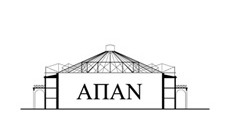Μαμώνη, Σύλλογοι Θράκης και Αν. Ρωμυλίας (1995)
[Bibliography]
Κυριακή Μαμώνη, Σύλλογοι Θράκης και Ανατολικής Ρωμυλίας (1861-1922). Ιστορία και δράση (Ίδρυμα Μελετών Χερσονήσου του Αίμου, αρ. έκδ. 261, Θεσσαλονίκη 1995)
Kyriaki Mamoni, The Associations in Thrace and Eastern Rumelia (1861-1922). Their History and Activities (published in Greek by the Institute for Balkan Studies, Thessaloniki 1995).
This work is divided into two parts. In the Introduction (pp. 17-30), the author briefly outlines the purposes of corporate activity during the antiquity, the Byzantine era, and the period of Ottoman rule. She then gives a general account of the incorporations that existed before the foundation of the Greek Literary Association of Constantinople (Ε.Φ.Σ.Κ.), in 1861. The most important of these were the confraternities (αδελφάτα) and the guilds (συντεχνίαι), which engaged in charitable and educational activities.
The Greek associations in Thrace and Eastern Rumelia (i.e. Northern Thrace – part of Southern and Eastern Bulgaria after 1885) generally had cultural, educational, and charitable aims, and they offered indirect support to the Greek national question. Bulgarian and Turkish aggression led the Greeks of Thrace to establish revolutionary patriotic organizations, which directly served the cause of Thracian Hellenism. The writer further presents a general picture of the Thracian corporate activities. In Part One (pp. 31-120) she gives a more detailed account of these activities, based on research into original sources, statutes, reports, accounts, press articles, articles in contemporary periodicals, and various others testimonies. This section starts with a brief report about the part played by the Oecumenical Patriarchate in the establishments of the associations in Thrace and Eastern Rumelia, after the «Love One Another» («Αγαπάτε Αλλήλους») Educational and Philanthropic Fraternity was founded in Constantinople.
The associations are listed according to their administrative regions: A. the Vilayet of Adrianople and the Sanjaks of: 1. Adrianople, 2. Rodosto, 3. Saranta Ecclesiae, 4. Gallipoli, 5. Gümurjina, 6. Dedeagatch; B. the Vilayet of Constantinople and the Santjak of Metron (Tchatalja); C. Eastern Rumelia (i.e. Northern Thrace, which became part of Bulgaria after 1885). In Part Two (pp. 121-39), the writer discusses the Thracian organizations in terms of the political developments and the various national rivalries in the Balkans. The Bulgarian and the Greek revolutionary movements in Thrace are compared, and the writer concludes by citing references to various political organizations based in Athens, Constantinople and Xanthi. Their activities were widespread and their purpose was to further the aims of Hellenic domestic policy.
The appendix (pp. 141-53) comprises a list of the incorporations mentioned, with the dates of their foundation or the dates of the oldest evidences of their existence according to the writer’s research. The information in the list is then broken down into two histograms illustrating the development of the incorporations in the three major administrative regions at ten-year intervals. Bibliography pp. 161-172. General Index pp. 173-186. Figures (BW) pp. 187-223.

